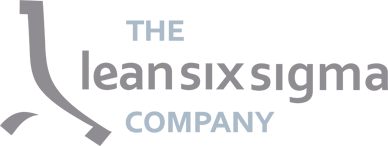OKR stands for Objective and Key Results, meaning the setting of objectives and results following a framework possibly wholly monitorable and measurable.
This working model is a projectual and strategic element, essential for any type of business, and the adoption of which has been largely completed by organizations, regardless of their geographical location or dimensions.
Among the main strengths of the OKR framework, we can find a high transparency and a thorough visibility on the effectiveness of the management’s decisions.
OKR: STRATEGIC OBJECTIVES WITH HIGH PRECISION
Creating beacons to establish objectives and results means ensuring that each action and effort taken inside the company is correctly directed to the goals the management is aiming to.
The more precisely OKRs are set, the easier it will be to monitor them and determine your progress on achieving them.
Examples of correctly set OKRs:
- 20% sales increase of product X by Q3
- Reducing total churn by 5%
Examples of not ideal OKRs:
- Increasing lead generation
- Identifying and eliminating blockers that contribute to churn
Analysing these latter examples, number 1 is not an optimal OKR because it lacks precision, especially by not providing measurable and specific expectations on the achievement desired.
Example number 2, instead, is not right because it represents a step to take in order to achieve an OKR (being, for instance, OKR 2 from the former list of examples). Such step could be then better identified as a second-layer-goal to reach instead.
OKR VS KPI
If OKRs represent a group of goals and results, KPIs are metrics used in the same framework to achieve them.
KPIs (Key Performance Indicators) allow you to track progress on a project in a clear and reliable way, and indicate the relevant factors around it.
While the fulfillment of the OKR’s framework gets measured following a 0-100 scale, the KPI indicators can be made measurable by quantitative, variable values.
EXAMPLE OF A BUSINESS SCENARIO
In an E-commerce of spares cars and moto parts a significant churn is observed, despite the marketplace seems to offer good perspective and possibilities.
OKR 1: Bringing churn from 10% to 5%
Key strategy points:
- Examining sales online funnels to spot possible blockers and obstacles;
- Increasing the overall quality of Customer Service;
KPI 1: Current NPS score (Net Promoter Score) 70
KPI 2: Current purchase path of the online shop online lasts 9 to 10 minutes before a purchase is completed, also due to the mandatory user registration
New KPIs needed to achieve the OKR:
- Lift the NPS score to 80 to prove the enhancing of Customer Service;
- Reducing the purchase path to 3-4 minutes, making the user registration not compulsory, but keeping the clients’ data retrieval.
OKR AND BUSINESS AMBITION
Reaching pre-set goals with minimum efforts is an exceptional event in all senses, meaning both great and rare.
This kind of achievements, indeed, should not be that frequent: if most of the company’s OKR can be reached easily, it’s likely the case that the business could aim for more ambitious goals.
OKRs are born to encourage and tap into business potential; thus, a more aggressive business model takes in count risk ranges and operates on the high part of these same ranges, aiming to achieve high impact results.
It doesn’t matter if the goal is to increase sales by 200% or augment the customer satisfaction by 0.01%: a difficult OKR is usually an ambitious, highly-rewarding goal to reach.
Furthermore, they can be defined by strategic and tactical objectives.
The strategic ones are considered of a higher level, are defined by management and affect the entire company by indicating where the corporation is going in the long term.
The tactical ones are related to operational teams and regards short term initiatives.
To learn more on setting and accomplish the right OKRs for your business model, contact us at the link below, and discover the Lean Six Sigma’s business consultancy approach.
OKR AND CONTINUOUS IMPROVEMENT (CI) – LEAN SIX SIGMA
One of the greatest challenges of CI is an effective performance management. OKR has a clear benefit for an effective performance management.
By knowing what your Objective is and translating these into key measurable results you can manage these in order to achieve them. Too often we get stuck with lagging KPI’s which lead to performance management collapsing after a period of time as you are not managing future objectives. OKR prevents this.
The OKR framework provides a high transparency and a thorough visibility on the effectiveness of the management’s decisions. Well set up Objectives and Key Results make it simple to monitor them and take required action if required. Objectives and Key results are thus clearly they measurable and simple to explain, so a cascade of OKR throughout an organisation is easy to achieve.
This gives more impetuous in driving CI – Lean Six Sigma in an organisation as you now have a simple way to manage your performance and continuously improve and adapt based on the objectives and the key results you wish to achieve.
Want to learn more or have a question?
Request our prospectus.
